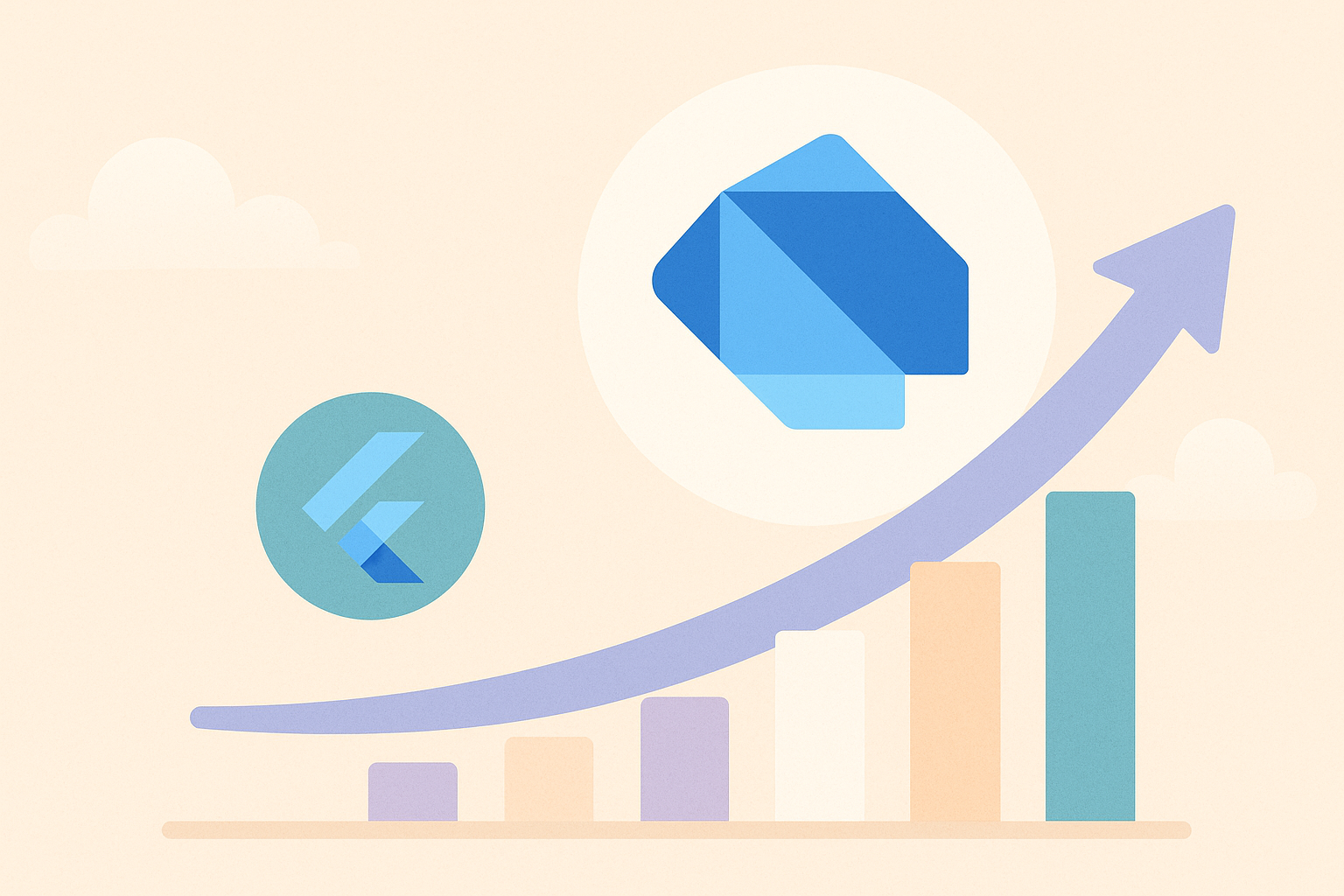Introduction: The Rise of Dart in the Flutter Era
In recent years, Flutter has rapidly evolved from a promising cross-platform framework into one of the most powerful mobile development ecosystems. At the heart of Flutter lies Dart—a programming language developed by Google that has been quietly gaining traction among developers worldwide. The Dart ecosystem is no longer just an afterthought; it is becoming one of the key pillars of modern mobile, web, and desktop app development.
As more developers embrace Flutter for its speed, productivity, and flexibility, Dart’s ecosystem has matured into a complete solution for scalable and high-performance applications. But why is Dart suddenly becoming so popular? What makes it stand out in 2025’s fast-evolving tech landscape? Let’s dive deep into the reasons behind Dart’s growing momentum.

1. Seamless Integration with Flutter
Flutter’s success has directly fueled the growth of Dart. Unlike frameworks that rely on bridges to communicate with native components, Flutter uses Dart to compile directly into native machine code. This means developers can achieve native performance without dealing with the overhead of platform-specific integrations.
The single codebase principle is central to Flutter’s philosophy. With Dart, developers can write code once and deploy it across multiple platforms—Android, iOS, web, and desktop. This native-level performance, combined with near-instant hot reload, makes Dart a developer’s dream for rapid prototyping and efficient UI testing.
2. Modern Language Features
Dart’s syntax and feature set are designed for modern development workflows. It blends the simplicity of JavaScript, the structure of Java, and the type safety of TypeScript. Developers who have experience in any of these languages can quickly adapt to Dart.
Some of Dart’s standout features include:
- Null Safety: Eliminates a huge class of runtime errors by ensuring variables are non-nullable unless explicitly stated.
- Sound Typing: Guarantees better code reliability and improved debugging.
- Asynchronous Programming: Dart’s async/await syntax and Stream API make it easy to manage real-time data and API calls.
- Object-Oriented Yet Functional: Dart supports both paradigms, giving developers flexibility in how they design their architecture.
These features contribute to cleaner, safer, and more maintainable codebases—critical for long-term app scalability.
3. Expanding Ecosystem and Packages
Dart’s package ecosystem is one of the key reasons for its momentum. Through pub.dev, developers have access to thousands of libraries for tasks ranging from Firebase integration, animations, and payment gateways to advanced AI and AR implementations.
In 2025, we’ve seen massive growth in Dart’s third-party package ecosystem. Developers are increasingly publishing open-source libraries optimized for Flutter’s performance model. This expanding ecosystem means developers can focus more on building core features rather than reinventing the wheel.
4. Web and Desktop Capabilities
Flutter is no longer just for mobile. Thanks to Dart’s adaptability, it now powers robust web and desktop applications. Flutter Web uses Dart’s JavaScript compiler to render applications in the browser with impressive speed and fidelity.
On the desktop side, Dart’s ability to compile to native binaries allows Flutter to run seamlessly on Windows, macOS, and Linux. This expansion into multi-platform environments has positioned Dart as one of the few truly universal programming languages for UI-driven apps.
5. Strong Backing from Google and the Developer Community
Being backed by Google gives Dart a solid foundation. Google itself uses Dart and Flutter in several internal and public-facing products, proving the technology’s production readiness. The Google Ads mobile app and many experimental UIs within the company are powered by Flutter and Dart.
Beyond Google, the developer community has also embraced Dart with open arms. Conferences, tutorials, YouTube channels, and online academies continue to grow around Flutter and Dart, ensuring a wealth of learning resources for newcomers.
6. Performance That Rivals Native
One of Dart’s key strengths lies in its performance. Dart compiles directly to ARM and x64 machine code, enabling Flutter apps to launch faster and run smoother than hybrid alternatives. The lack of a JavaScript bridge (like in React Native) reduces latency, resulting in snappier UI interactions and faster animations.
With Dart’s ahead-of-time (AOT) and just-in-time (JIT) compilation, developers enjoy both development speed and runtime performance. This performance advantage makes Dart-based apps suitable not only for startups but also for large-scale enterprise deployments.
7. The Future of Dart and Flutter
The roadmap for Dart continues to expand in 2025 and beyond. Google has announced improvements in tooling, web rendering, and support for AI-driven applications. Dart is also exploring tighter integration with cloud services, IoT devices, and even embedded systems.
Flutter’s consistent ranking in the top cross-platform frameworks ensures Dart’s relevance for years to come. As more companies adopt Flutter for production-grade apps, the need for Dart developers is growing rapidly, leading to an expanding job market and long-term stability for the ecosystem.
8. Developer Experience and Productivity
Dart’s development environment is highly optimized for productivity. The Flutter SDK provides out-of-the-box debugging tools, testing frameworks, and performance profiling instruments. IDEs like Android Studio, Visual Studio Code, and IntelliJ IDEA offer seamless support for Dart syntax highlighting, code completion, and widget previews.
Furthermore, the Hot Reload feature—enabled by Dart’s reactive architecture—has transformed the way developers iterate and test. Code changes reflect instantly without losing the current app state, dramatically speeding up development cycles.
Conclusion: Dart’s Momentum Is Just Beginning
Flutter’s explosive growth has positioned Dart as one of the most promising programming languages of the decade. It’s modern, fast, scalable, and increasingly well-supported. From startups to enterprise developers, Dart is redefining how we think about cross-platform development in 2025.
As more businesses prioritize cross-platform efficiency and native performance, Dart’s ecosystem will continue to expand. If you’re a developer looking for a language that combines speed, productivity, and future-proof design—Dart is the way forward.
To explore more about Flutter and Dart, visit the official Flutter documentation for detailed guides and best practices.

